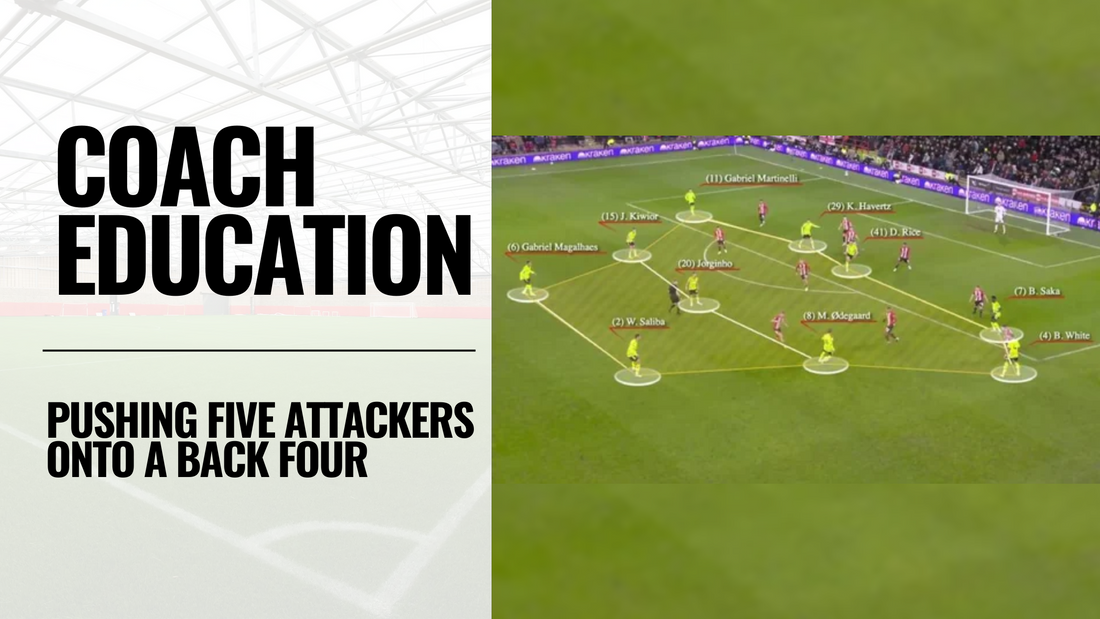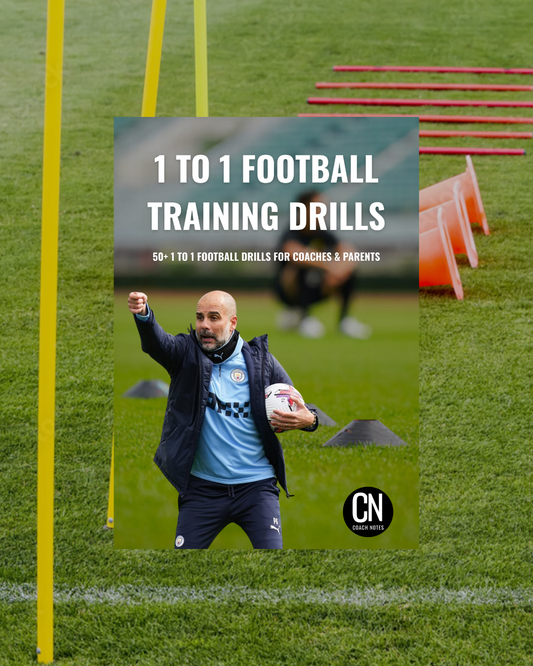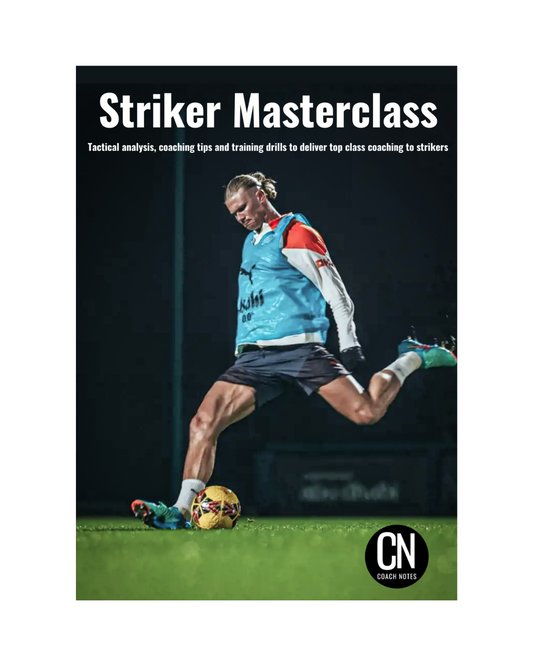
Pushing Five Attackers onto a Back Four
Share
One of the most noticeable tactical evolutions in recent years has been the shift towards using five attackers against a traditional back four. It’s a structure that teams are using across various formations to dominate the final third, exploit wide areas, and stretch defensive lines to create gaps between and behind.
This article breaks down the reasoning, structure, benefits, and coaching implications of pushing five players onto a back four and why it's become a staple of top-level football tactics.
⚽️ What Does “Pushing Five” Mean?
Regardless of the starting formation, whether 4-3-3, 3-4-3, or 4-2-3-1. Coaches now commonly restructure their attacking phase to deploy five forward players across the final third.
These typically include:
- 2 wide players: Hugging the touchlines, usually wingers or advanced wing-backs
- 2 players in the half-spaces: Often attack-minded midfielders or inverted forwards
- 1 central striker: Leading the line through the middle
The result is a 2-3-5 or 3-2-5 shape in the attacking phase — a revival of the old WM formation used in early-to-mid 20th century football, adapted for modern intensity and spacing.
🤔 Why Use a Front Five?
The aim is to stretch a traditional back four to its limits. By placing five attackers against four defenders, you create a constant threat:
- If the back four defend wide, space opens centrally (especially in the half-spaces)
- If they stay compact, you expose 1v1s or overloads in wide areas
- If a midfielder drops into the back line to help, you win the numbers game in midfield
It’s a tactical puzzle for the defending team and a structure that keeps your side on the front foot in possession.
🔑 Key Benefits of Pushing Five
1. Width and Stretch
With wingers or wing-backs positioned wide, the pitch is fully stretched. Full-backs are forced to stay wide, which creates gaps in central areas.
2. Half-Space Exploitation
Midfielders occupying half-spaces (the channels between centre-backs and full-backs) give the team multiple creative outlets. These are difficult areas for defenders to cover without disrupting their line.
3. Central Occupation
The striker keeps the centre-backs occupied and can pin the line, while also linking play or running in behind.
4. Overloads and Decision Dilemmas
A back four cannot fully cover five attackers without help from midfield. This often pulls midfielders deeper, which reduces their pressing or playmaking threat.
5. Rest Defence and Counter Protection
By maintaining a 2-3 or 3-2 structure behind the front five, teams are able to stop counters before they start providing security and territorial control.
🧩 Formations That Adapt into a Front Five
The front five isn’t dependent on one starting shape. It’s about the movement and roles of players in the attacking phase. Examples include:
-
4-3-3
→ Full-backs push up, wingers stay wide, 8s attack half-spaces
→ Creates a 2-3-5 when in possession -
3-4-3
→ Wing-backs provide width, inside forwards occupy half-spaces
→ Natural 3-2-5 structure -
4-2-3-1
→ No. 10 and wide players advance, overlapping full-backs or inside runs shape the width
→ Balanced if players understand spacing
Coaching Tip:
Whatever formation you use, ensure clear roles in wide, half-space, and central zones. Communication and positional rotation are key to making this dynamic.
❌ Challenges for the Opponent’s Back Four
A traditional back four faces major decisions when confronted with five attackers:
- Go man-for-man? Leaves them vulnerable to rotations and overloads
- Stay zonal and compact? Gives the wide players too much space
- Drop deeper? Cedes territory and invites pressure
The result is defensive hesitation and hesitation leads to mistakes. Teams that use this structure well control territory, force reactions, and create chances.
😴 Rest Defence: Controlling Transitions
A common criticism of committing five players forward is being vulnerable to counter-attacks. However, the modern 2-3 or 3-2 rest defence formed by centre-backs and a holding midfielder or two protects against this.
Structure behind the ball:
- 2-3 rest defence: 2 CBs + 1 pivot + 2 full-backs tucked in
- 3-2 rest defence: 3 CBs + 2 pivots
This shape:
- Controls central areas
- Delays opposition counters
- Allows quick pressing on turnovers
Coaching Focus:
- Train players to react to ball losses
- Encourage proactive positioning behind the attack
- Ensure coverage for full-backs/wing-backs when they push forward
📜 A Nod to the Past: The WM Connection
Interestingly, this is not a brand-new tactical innovation. The WM formation, made famous in the early 20th century by managers like Herbert Chapman, used a similar shape: three defenders, two defensive midfielders, and five attackers (two wide, two inside, one centre).
Today’s modern 2-3-5 shape is the WM reborn adapted with modern principles of pressing, positional play, and speed.
🧠 Coaching the Concept
To implement this attacking shape effectively, coaches should:
- Develop wide player discipline: Stay wide to stretch, but recognise when to attack or support
- Train half-space decision-making: Timing of runs, receiving between the lines, link play
- Drill positional rotations: Swap roles while maintaining structure
- Build rest defence habits: Ensure transition control and security
Session Ideas:
- 8v6 final third overloads (coaching spacing, width, and combinations)
- Shadow play to develop attacking structure and roles
- Transition games with quick recovery and rest defence positioning
📖 Conclusion: Five Into Four Does Go
Pushing five attackers onto a back four creates constant tactical dilemmas for the opposition and gives your team multiple ways to progress, create, and dominate. It’s a modern shape grounded in historical foundations but supercharged with today’s pace, technical skill, and positional intelligence.
For coaches, it’s about more than structure it’s about clarity, roles, and reaction. Get those right, and your team can become a consistent threat in the final third while remaining stable in transition.










1 comment
happy